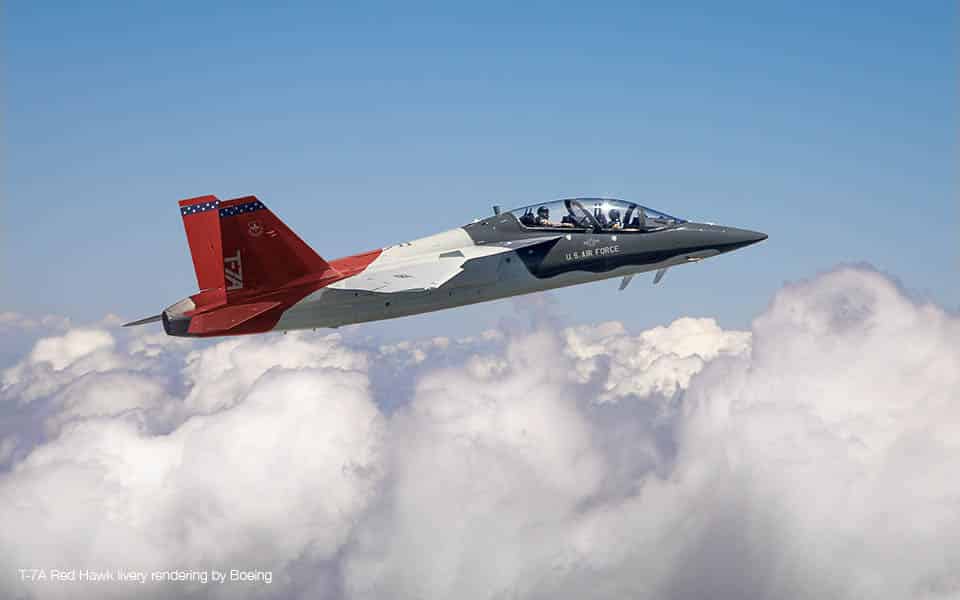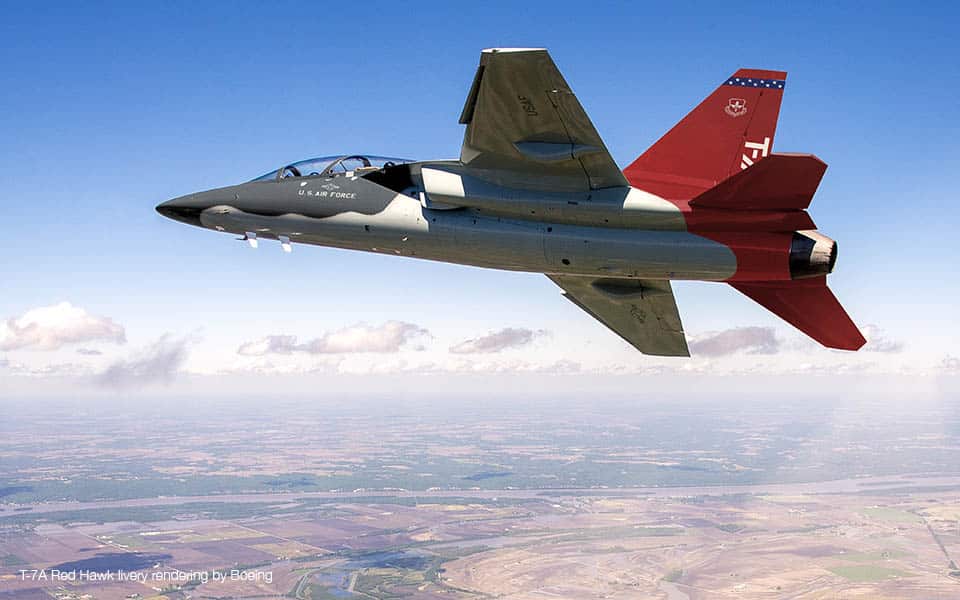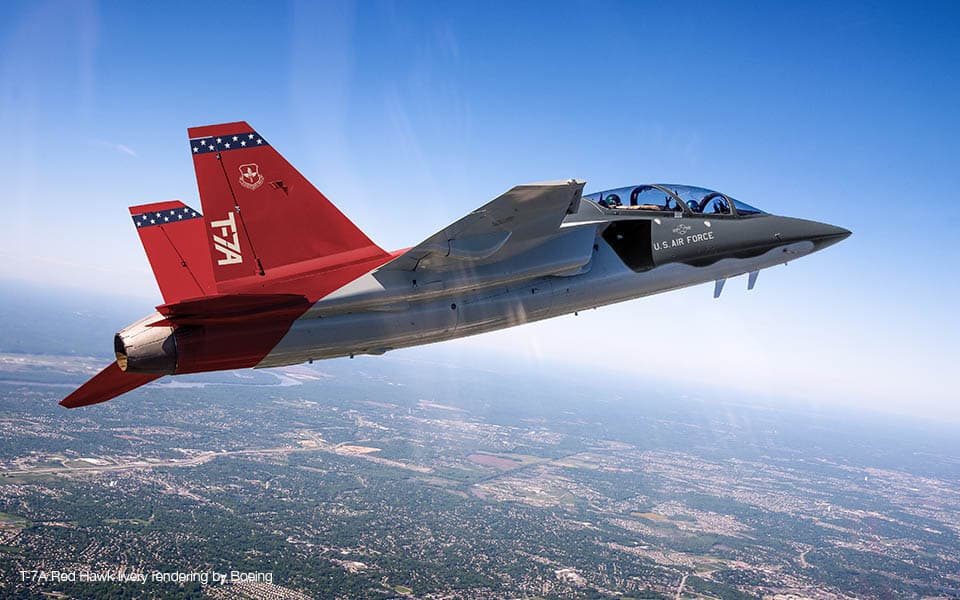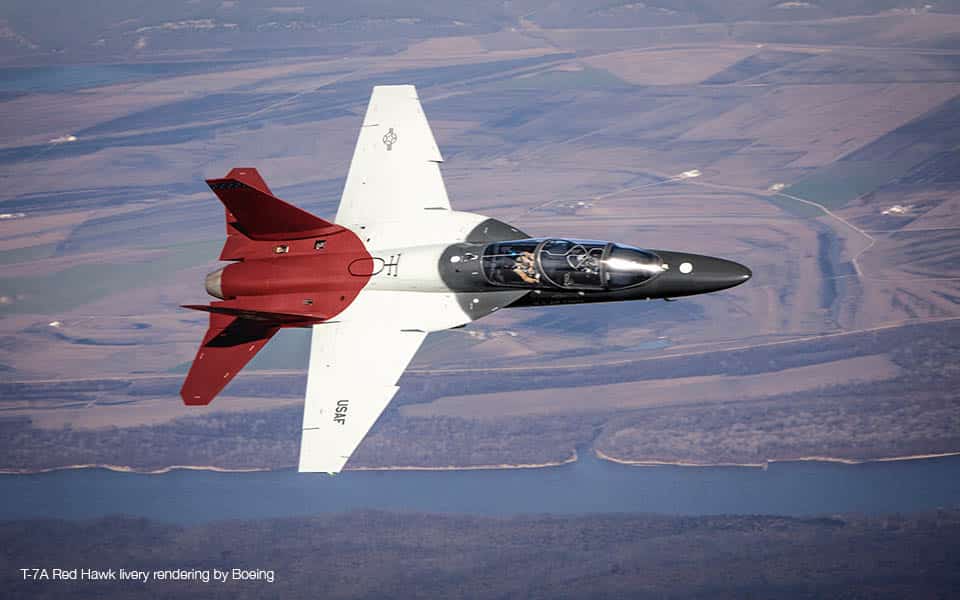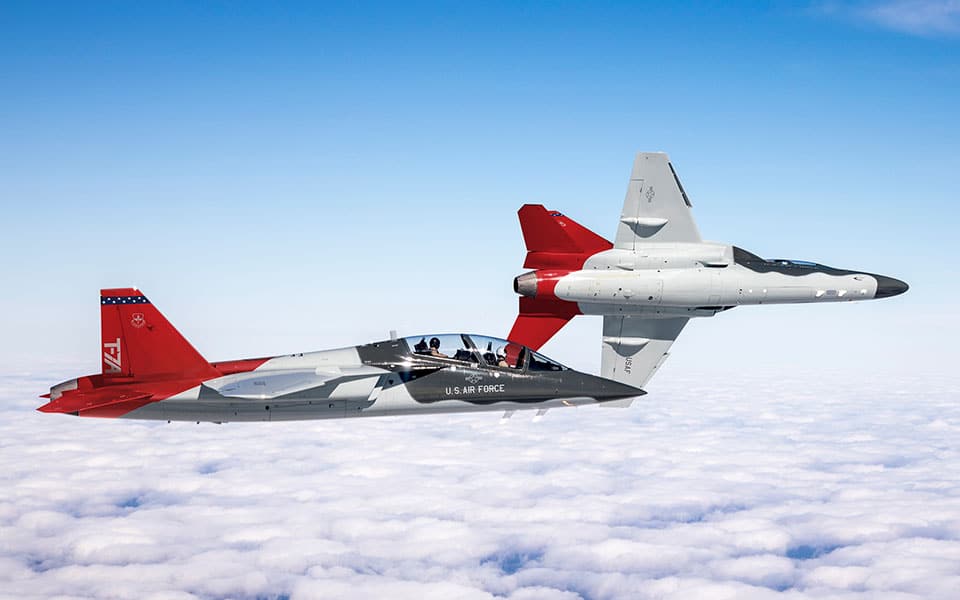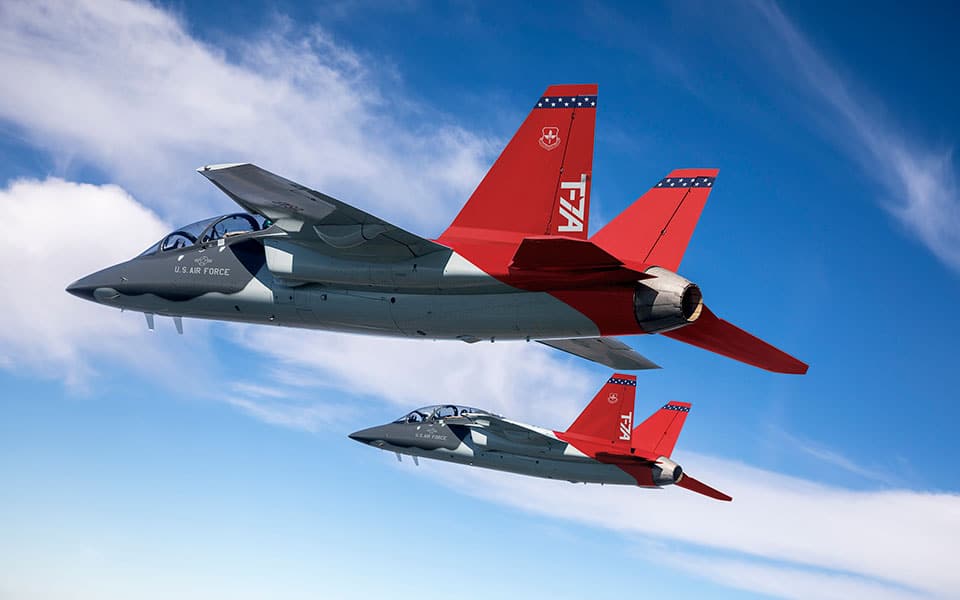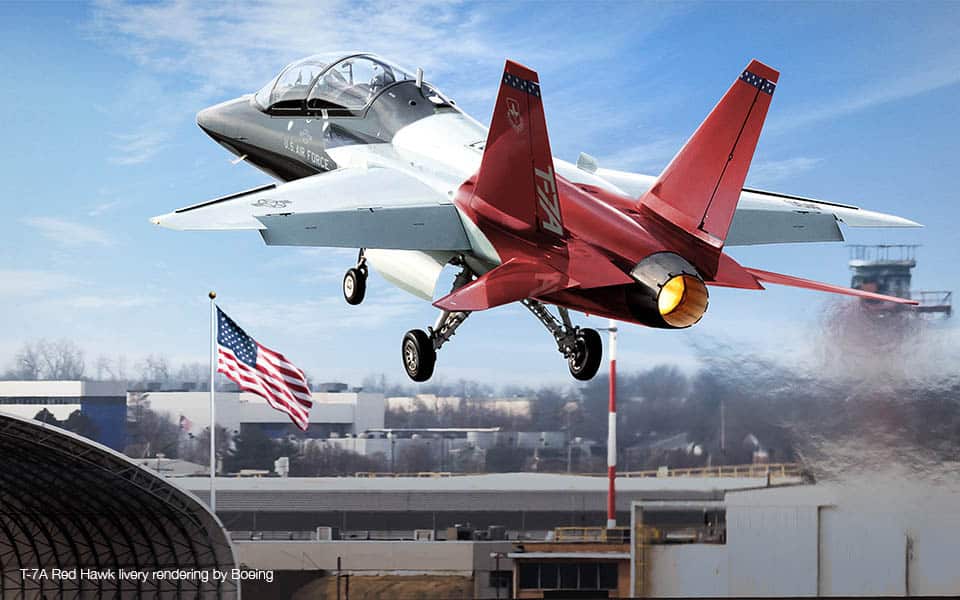Aerospace
Top 5 facts about Boeing’s T7 Red Hawk trainer aircraft

Boeing has unveiled the T7 Red Hawk, a highly anticipated aircraft created in conjunction with the Swedish business SAAB. Initially, Boeing won the proposal to replace the Northrop T38 Talon aircraft in the US Air Force’s new need. Boeing believes that with the Digital thread, aeroplanes may be maintained and designed in simple steps.
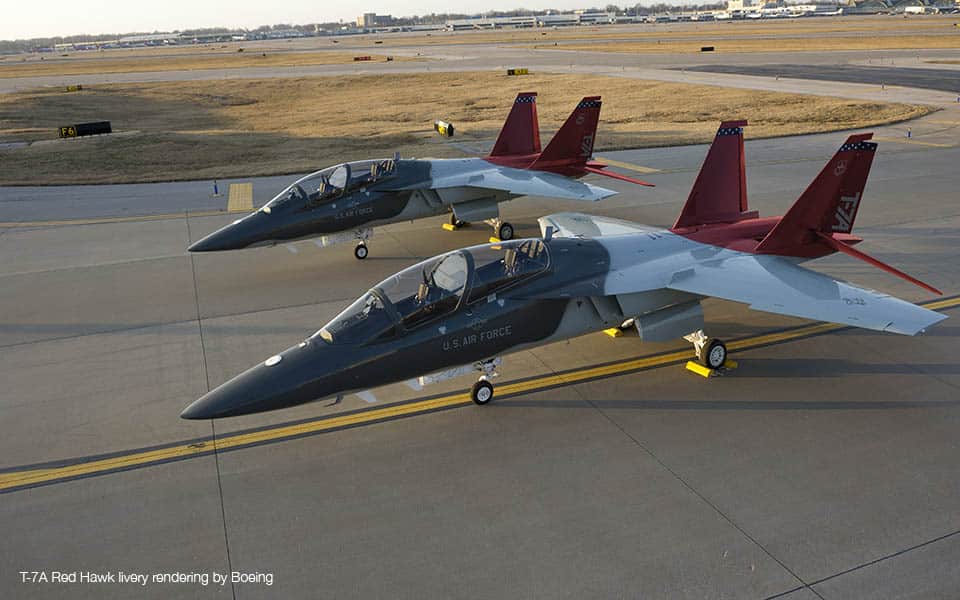
Boeing T-X Marketing Shots with 2 planes and 2 pilots at Sunrise Lambert Airport Ramp_MSF17-0004 Series_2/5/2017_RMS#306154
- The GE F404 engine powers it.
Boeing’s T-X is a single-engine advanced jet trainer with a twin tail, tandem seating, and retractable tricycle landing gear developed by Saab, a Swedish aerospace partner. A General Electric F404 afterburning turbofan engine powered the aircraft and display versions.
- For rapid development, use the digital engineering process.
To facilitate more rapid and economical future aircraft development, the aircraft was built using digital engineering procedures, agile software development, and an open architecture mission system. These cutting-edge, computer-assisted manufacturing processes support the US Air Force’s Digital Century Series plan while also expanding the supplier base.
Boeing Begins Build on New Zealand’s First P-8A Aircraft
- This plane was built in just three years.
As a result of defying the rules, this aircraft was created in under three years from idea to first flight. This demonstrates how technology can assist in obtaining quick results. This aircraft would be appropriate for maintainers, offering extremely immersive training and skill transfer, as well as advanced fighter-like performance qualities comparable to today’s 4th and 5th-generation fighters.
- It has the ability to upgrade to a fighter variant.
The T7 aircraft, according to Boeing, can be customised to the pilot’s preferences. Software can be simply adjusted to meet future needs. Rather of using the most expensive training methods, the T7 can meet the requirements of the Air Force and train students in less time.
First A380 powered by 100% Sustainable Aviation Fuel takes to the skies
The T-7A’s architecture allows for expansion should new tasks, such as an aggressive, light attack / fighter variant, become available. This aircraft is simple to maintain, and Saab has created new software for the T-7 to aid in development costs and speed. Splicing the aft segment with the wings takes only 30 minutes on the T-7A’s sophisticated and digital production line.
- A single plane can cost up to $19.3 million in the United States.
The Boeing design was officially announced as the US air force new advanced jet trainer to replace the T-38 Talon on September 27, 2018. At a cost of up to US$9.2 billion, a total of 351 aircraft, 46 simulators, maintenance training, and support will be provided. All 475 planes were purchased for $19.3 million each unit.
Boeing plans to sell approximately 2,700 Red Hawks around the world. The business is eyeing Serbia and Australia as prospective overseas customers in addition to the US Air Force.

Aerospace
Indigo will soon launch Air Taxi Service in India

InterGlobe Enterprises, the parent brand of IndiGo, is set to revolutionize travel in India with its upcoming air taxi service.
Scheduled for a potential launch in 2026, this innovative venture promises a seamless journey for passengers between two bustling hubs. Delhi and Gurgaon in Haryana. The forthcoming service is projected to revolutionize the daily commute, offering passengers a swift aerial journey covering the distance in a mere 7 minutes.
This remarkable efficiency contrasts starkly with the conventional 90-minute drive, underscoring the immense time-saving potential for commuters. The anticipated fare, ranging from Rs 2,000-3,000, makes this innovative mode of transport not only swift but also remarkably competitive in pricing.
At the heart of this ambitious endeavor lies a strategic partnership with Archer Aviation, a pioneer in electric vertical takeoff and landing (eVTOL) aircraft technology. Under this collaboration, Archer will supply 200 state-of-the-art eVTOL aircraft, representing an investment of US$ 1 billion. These cutting-edge aircraft, capable of accommodating up to four passengers alongside the pilot, epitomize the future of sustainable air travel.
Powered by six battery packs, Archer’s eVTOL aircraft boast rapid charging capabilities, enabling a swift turnaround between flights. With a charging time of just 30-40 minutes, these eco-friendly aircraft ensure minimal downtime, maximizing operational efficiency.
Similar services are anticipated to be introduced by the joint venture in Bengaluru and Mumbai as well. Nevertheless, the service rollout period has not yet been made public by the company. Next year, it is anticipated to get its certification. Following this, the company will start the certification procedure with the Directorate General of Civil Aviation (DGCA).
Aerospace
Which is bigger 777x or 787 aircraft ?

The 777X is a new series of the Boeing 777 family and is designed to be larger and more efficient than its predecessor. It features two variants: the 777-8 and the 777-9, being the larger of the two.
The Boeing 777X emerges as the larger sibling within the Boeing family, representing a significant leap forward in both size and efficiency. Comprising two variants, the 777-8 and the 777-9, the latter takes the crown as the larger of the two. With its expansive fuselage and impressive wingspan, the 777X is tailored for long-range journeys and boasts a substantial passenger capacity.
On the other hand, the Boeing 787, affectionately known as the Dreamliner, occupies a niche in the market as a smaller yet formidable aircraft designed for medium to long-range flights. Its distinguishing feature lies in its composite fuselage, a technological marvel that renders it lighter and more fuel-efficient compared to conventional aluminum counterparts. The Boeing 777X is larger than the Boeing 787 aircraft.
When it comes to passenger capacity, the 777-9 reigns supreme, typically accommodating a sizeable contingent of 400-425 passengers in its standard configuration. In contrast, the 787, with its more modest dimensions, typically carries between 240-290 passengers, depending on the variant and layout.
One of the remarkable innovations introduced with the 777X is its folding wingtips, a feature designed to address the logistical challenges of accommodating such a large aircraft in conventional airport gates. These folding wingtips enable the 777X to retract its wings, allowing it to fit into gates designed for smaller aircraft while still reaping the benefits of an extended wingspan during flight, thereby enhancing fuel efficiency and operational flexibility
Aerospace
China Secures Production Certificate for Mass Production of Pilotless eVTOL Aircraft

The first passenger-carrying pilotless electric vertical takeoff and landing (eVTOL) aircraft in the world, the EH216-S, has received the Production Certificate for its eVTOL aircraft from the Civil Aviation Administration of China (CAAC).
This is a significant milestone for EHang Holdings Limited, the leading UAM technology platform company in the world. This outstanding accomplishment is another big step towards mass manufacturing for the eVTOL aircraft and the ensuing commercial operations, building on the ground-breaking acquisition of the Type Certificate and the Standard Airworthiness Certificate for the EH216-S.
The PC is a crucial certificate that the aircraft maker receives from the CAAC, the country’s aviation authority. By obtaining this certificate, EHang has demonstrated that it has set up a quality management system for mass production that satisfies the airworthiness regulation standards set forth by the CAAC, and the company has been given permission to continue producing mass quantities.
It is also a strong guarantee of the calibre of the goods made by EHang. Raw materials, supplier management, manufacturing organisation, production quality control, aircraft pre-delivery test, after-sales repair and maintenance, etc. are all included in the mass production quality management system for the EH216-S.
To ensure that every aircraft and its components that roll off the production line strictly adhere to the approved type design and safety requirements, the system sets clear guidelines and documentation for every step in the production procedure. This ensures comprehensive traceability and safety control.


